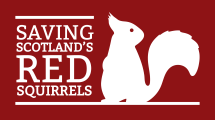A non-native species is a species that has been introduced to an area where it doesn’t naturally occur. Most of these are harmless but some threaten native species. These are called invasive non-native species (INNS). INNS have been identified as one of the top causes of global biodiversity loss. In Scotland, one of the most prominent INNS is the grey… […]
Read More…
…If people would like to get involved, either by taking part in our reintroductions by monitoring feeder boxes or if they have woodland in the north-west highlands that may be able to support a population of red squirrels, they should contact us initially at hello@treesforlife.org.uk . They should also send in any sightings of squirrels in the highlands to Saving… […]
Read More…
…Hub and necessary professional grey squirrel control in key areas. Join a Local Group Achievements to date Increase in grey squirrel control – Analysis of trapping results has shown an increase in grey squirrel detection, largely due to the increase in control activity across the region by volunteers and landowners, with volunteer cull contributions rising from 1.3% to 27%… […]
Read More…
…share in our enthusiasm and learn something new during the week. For example, did you know that… The estimated total annual costs of invasive non-native species to Scotland is more than £250 million? Giant hogweed leaves, which contain skin-burning sap, can grow up to 1m wide? Predation by the invasive American mink was one of the main factors in the… […]
Read More…
